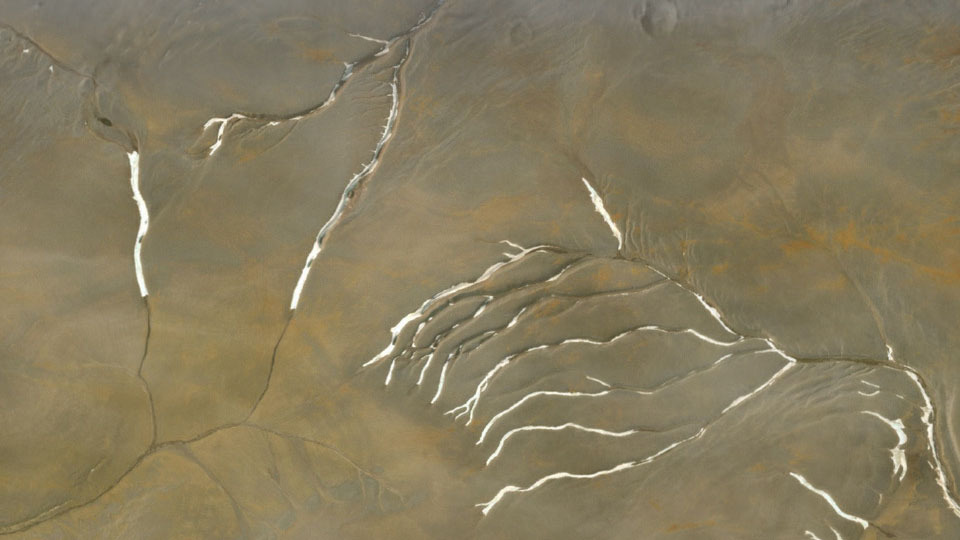Researchers from the University of British Columbia and the University of Western Ontario (Canada)put forward a hypothesis according to which numerous Martian valleys were formed as a result of water melting under ancient glaciers. This is reported in the journal Nature Geoscience.
According to the currently dominant hypothesis, early Mars was warm and humid. Rivers flowed, they flowed into the seas and oceans, and the evaporated water fell to the surface in the form of precipitation. According to the new version of the Canadian team of scientists, everything was completely different - in ancient times the Red Planet was covered with ice, and soil erosion in most cases was caused by melt water formed under the glaciers.
As evidence of their hypothesis, the scientists demonstrate the amazing similarity of images of most of the Martian valleys and drainage channels of melt water under the glaciers of the uninhabited island of Devon in the Canadian Arctic Archipelago.
“For the past 40 years, since the discovery of valleys on Mars, it has been assumed that they were all once formed as a result of erosion caused by the flow of rivers. But there are hundreds of valleys on Mars, and outwardly they are very different from each other. If you look at the Earth from a satellite, you can see many valleys: some were formed by rivers, others - glaciers, and others - as a result of the impact of other processes, "- said the main author of the work, a former graduate student in the Department of Earth, Ocean and Atmospheric Sciences at the University of British Columbia Anna Grau Galofre.
According to the researchers, the landscape of Devon Island is the closest terrestrial analogue of early Mars - it is a cold, dry and very icy polar desert. After comparing the under-ice channels of Devon and most of the Martian valleys, scientists came to the conclusion that the latter should be considered not the channels of dried up rivers, but traces of the impact of melt water on the soil of the Red Planet. In total, the researchers analyzed more than 10 thousand Martian valleys, revealing the nature of soil erosion.
- Collage: Overlay images of the Martian valleys of Momi (top) and glacial melt water channels on Devon Island in the Canadian province of Nunavut (bottom)
- © Anna Grau Galofre
“We found that only a small fraction of the valley networks have a pattern typical of surface water erosion, which is clearly contrary to conventional wisdom. The use of geomorphology in the study of the surface of Mars to thoroughly and reliably reconstruct the nature and characteristics of the evolution of the planet is an approach, frankly, revolutionary, ”says another study author, professor at the Department of Earth, Ocean and Atmospheric Sciences at the University of British Columbia, Mark Jellinek.
According to the theory of Canadian researchers, the Martian rivers could not flow over the planet's surface. The valleys, which are about 3.8 billion years old, were formed at a time when the intensity of the Sun was much lower, and Mars itself is much further from the star than Earth. Consequently, the Red Planet was covered with glaciers.
“Climate modeling suggests that Mars was much colder during the formation of the valley network. We tried to get a complete picture and put forward a hypothesis that has not been considered before: the outflow channels and networks of valleys formed under the ice sheet, ”said Grau Galofre.
The climatic conditions that existed on early Mars were quite suitable for supporting life, the researchers say.
The surface layer of ice protected the underlying water from solar radiation in the absence of a magnetic field that disappeared on this planet several billion years ago.
Scientists plan to use analytical tools developed for studying Mars to study the early history of the Earth.
“Now we can recreate in great detail the history of global glaciation on Earth from 1 to 5 million years ago, as well as study the advance and retreat of ice sheets that took place at least 35 million years ago - long before the times, which include the most ancient of the mined by us. ice cores, ”concluded Mark Jellinek.

